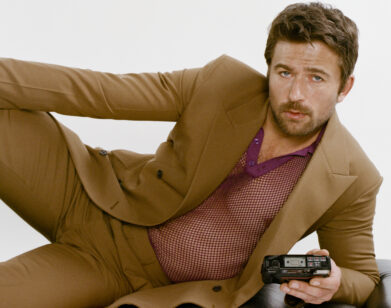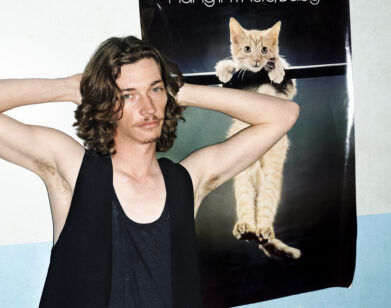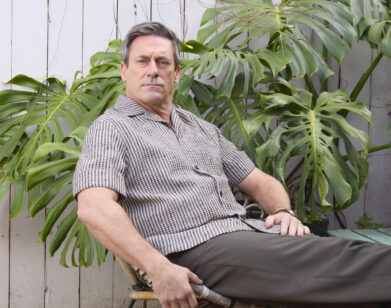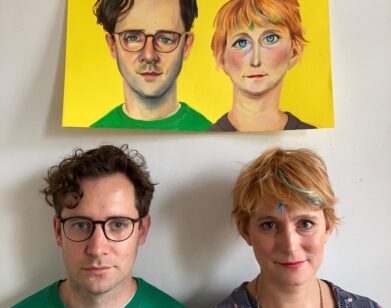Joe Swanberg Takes the Scares
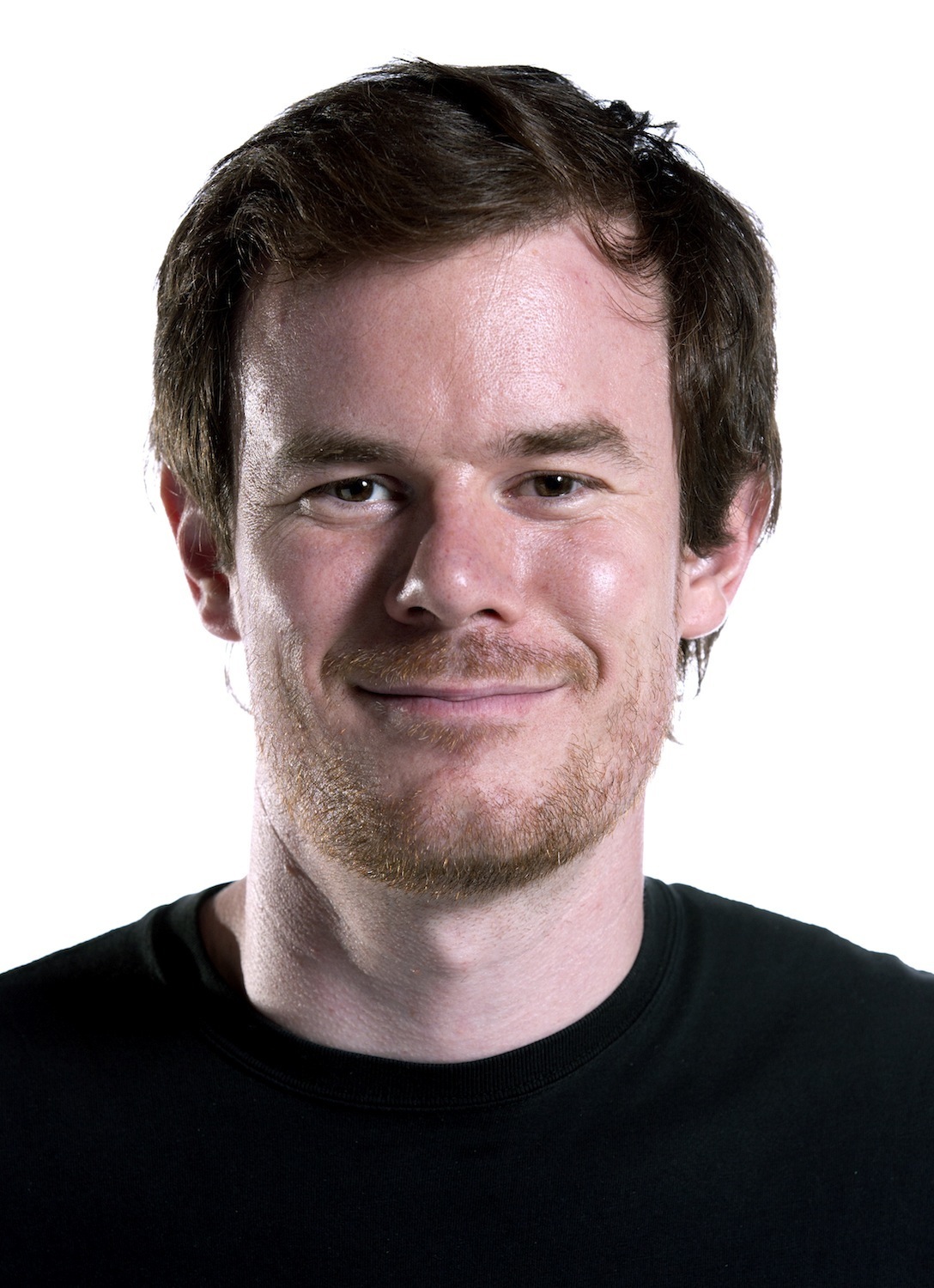
ABOVE: JOE SWANBERG. IMAGE COURTESY OF MAGNOLIA PICTURES
Joe Swanberg found critical recognition for his contributions to the film genre known as mumblecore, a style of DIY filmmaking focused on improvisational and naturalistic dialogue. His films, which include LOL, Hannah Takes the Stairs (featuring Greta Gerwig), and Uncle Kent, create a portrait of a very particular twenty- and thirty-something ennui, with special emphasis on the complications that accompany establishing relationships in today’s tech-driven environment.
But the charm of Swanberg’s work lies in its versatility. The 31-year-old actor/director has acted in 11 films in various genres over the past two years, and has directed seven. His latest project, a short film in the horror anthology V/H/S, might be a surprising venture to those who think they know his niche, but Swanberg’s interest in expanding his range and skills as a filmmaker debunks any expectations based on his past work.
V/H/S, directed by Swanberg, David Bruckner, Glenn McQuaid, Ti West, Adam Wingard, and the quartet known as Radio Silence, smartly plays with subverting classic horror tropes: Satanic virgin sacrifice, vampires, unsuspecting kids camping in the woods. Divided into five segments and grounded with an overarching narrative, the entire film is presented as found footage, and while the low production values echo some of the qualities of mumblecore, all in all, V/H/S is a horror film through and through.
Swanberg’s segment, entitled “The Sick Thing That Happened to Emily When She Was Younger,” captures one girl’s fears that her apartment is haunted, recorded as a Skype conversation to her long-distance boyfriend. The twist, when it comes, is a chilling revelation on how communication technologies can trick and mislead.
We connected with Swanberg at home in Chicago to discuss his continuing interest in technology, approaching the horror genre, collaborating with friends, and the minor dangers of shooting death scenes.
COLLEEN KELSEY: Hey Joe, how are you? I heard you’re on location at the moment; what are you working on?
JOE SWANBERG: I actually just got home yesterday. I was acting in Josephine Decker’s new movie.
KELSEY: I wanted to talk to you about V/H/S. I saw the film, and I have to say, it’s probably the scariest movie I’ve seen in a while. Though I have to admit, I’m kind of a chicken when it comes to horror movies.
SWANBERG: [laughs] I’m happy to hear that.
KELSEY: You’ve held your own in the independent film world, specifically within the movement that’s come to be known as mumblecore. Did you see this move into horror as an experiment?
SWANBERG: You know, the last few years I’ve been working a lot with horror filmmakers, and I’m friends with a lot of horror filmmakers, so it wasn’t so much an experiment for me as much as it was moving closer to a social group that I was spending a lot of time with anyway. Ti West has been a friend of mine for a long time and he’s acted in some of my films, and I’ve also worked in the past couple years with Adam Wingard and Simon Barrett. It’s really fun for me. It’s just kind of a chance to collaborate with my friends who are, weirdly, horror filmmakers.
KELSEY: The film is divided into five separate shorts with one narrative anchoring them—was there any talk amongst you and the other directors about definitive themes or objectives for the movie as a whole, or did everyone just do their own thing and concentrate on their own projects?
SWANBERG: Everybody was definitely doing their own thing. The producers had a vision for the film and a sense of making sure that the stories weren’t too similar and overlapping too much. It’s a really cool project in the sense that we had the freedom. They basically approved the ideas and everybody would go off and do their own thing, which is really funny, because I feel like there’s so much thematic overlap in the shorts. So I think because everybody was free to do their own thing, it kind of captured this zeitgeist thing, I think about just the way people are using video technology and do-it-yourself things, so it was really fun. It was really cool to see the final project. The themes had a lot of crossover.
KELSEY: The majority of your films have been dramas about relationships, so how did you switch gears and approach horror?
SWANBERG: I had experienced acting in a film called You’re Next, that Adam Wingard directed, and after doing five or six years of doing relationship films, I found myself on the set of his movie, which was a much bigger kind of action movie, and I just realized as a director there’s a lot of things that I didn’t know how to do, filmmaking-wise. [There are] a lot of styles of filmmaking that I hadn’t tried and things that I felt like maybe I would be interested in, so V/H/S for me was a chance to stretch my muscles as a director and try something different that wasn’t rooted in realism so much or the kind of improvised films that I had been doing. I went into it wanting to make a true genre film. I didn’t want to do a mumblecore version of a horror movie, I really wanted to try to make something that functioned as a true horror film. And I had a great time doing it. I think it was a really good exercise, and I feel like it’s something that interested me as a director, trying out different styles. You get in a bit of a rut doing the same things.
KELSEY: Did you take any inspiration from any other horror films?
SWANBERG: Most of my horror inspiration is really older stuff and really new stuff. So, definitely the ’70s Texas Chainsaw Massacre, a lot of ’70s early horror movies, and then just being friends with Ti West and Adam and Simon. Their work kind of naturally influences me the way that all my friends’ work does, and that’s been a lot of the acting that I’ve done lately. I took a lot of guidance from them. And also Simon wrote the segment that I directed and was my DP, so, on-set as well, [he was] giving direction.
KELSEY: Your segment takes place entirely over a recorded Skype conversation. You’ve explored technology and how it affects relationships in previous films. Why did you want to transition that subject matter to a horror context?
SWANBERG: I think it’s kind of the most interesting thing that’s going on in our society right now. Definitely over the course of the past 10 years, I think there’s been a gigantic shift in the way we talk to each other, and the way that we communicate with each other. So as a filmmaker, that stuff’s always been really interesting to me, and I sort of considered a lot of my films horror films, the ones that were relationship dramas, because I feel like it was very easy to look at modern communication and the Internet and cell phones and all that stuff as horror movies, basically. The horror of disconnecting some people. So it’s not like a pretty natural transition into doing the V/H/S segment, and at least in the way that I thought about the communication, it was basically the same kind of stuff I’ve always been interested in.
KELSEY: You also acted in Ti West’s short in the film. Did you sign on to act before you knew you were directing?
SWANBERG: Yeah. Quite a bit before. So we shot Ti’s segment in, I think, May of last year, and I didn’t find out that I was going to direct one until August, I think. It was definitely something where I thought acting was the only way I would be involved. It was really excited to get the chance to direct one. I think Simon Barrett was a big advocate on that, really. I think he knew that I was interested in directing one and then was working on the producers on the behalf of trying to convince them why somebody who’s never done a horror film before deserves a shot at making one.
KELSEY: How did it feel to be on the receiving end of the violence in Ti’s short?
SWANBERG: It really did hurt my neck! I get stabbed a bunch of times. Fake knives are still made out of metal, and there’s still a hand jabbing at your neck. So, I actually, I remember we did like five or six takes of it, and my neck was really red and it hurt really bad. Each take got shorter and shorter before I was like, “Okay, go ahead, kill me!” I’ve actually died in a lot of movies. It’s kind of a recurring theme for me as an actor. It was really fun. It was mostly fun to just work with Ti. We did that short in a really naturalistic way, where the whole objective was for it to seem super-realistic, and so it was nice to work with friends of mine who could make it feel that way.
KELSEY: You’ve fairly prolific in terms of how many films you make in a short amount of time. Is this because you’re open to trying every genre and experimenting with as much styles and techniques as possible?
SWANBERG: Yeah, definitely. I learn a lot as a director from acting in other people’s films and just in general. I want to try and be as involved in the art of filmmaking as possible. I feel that the only way to really do that is to take on as many roles as possible, whether it be as an actor, an editor, a director, a cinematographer. Basically, I like to help and be involved, so anything anybody asks me to do, my first reaction is to say “Yes.”
V/H/S IS OUT IN LIMITED RELEASE THIS FRIDAY, OCTOBER 5, AND IS CURRENTLY AVAILABLE ON DEMAND.

